Madrid Tourism Information

Madrid is Spain's capital, it took over as capital after Toledo in 1561. The city of Madrid appeals to visitors not only as a business destination, but one for art lovers. It’s renowned for its rich repositories of European art, including the Prado Museum’s works by Goya, Velázquez and other Spanish masters. Madrid is centre of architecture also with many styles being depicted around its streets, the heart of old Hapsburg Madrid is the Plaza Mayor, and nearby the baroque Royal Palace and Armory, displaying historic weaponry.
The rich history and culture is present in every street around Madrid's area of Huertas, hosting many restaurants and bars.
The culinary flavours in Madrid and fresh fish (despite being inland) is one of the freshest around Spain and can eat excellent meals, for all budgets. Enjoy traditional dishes like Tortilla de Patatas, Paella, Calamares or Pulpo a la Gallega, many of them being regional dishes from around Spain! Also don't forget to enjoy Madrid's evenings and nights!
The party capital of Europe never sleeps with great places to come out at night, club and dance! Enjoy from the traditional Flamenco dancing to modern hits and electronic music.
Madrid is capital of Fashion as well, with twice a year hosting the Cibeles Fashion Week. Come to shop in many of the elegant boulevards around Salamanca, Goya and Serrano streets! But to get away from the hassle and buzzle of the city, Madrid offers some great parks and quiet areas like Retiro Park, Moncloa Park or Temple de Debod where to relax, walk or do sports!
Most of all, Madrid is a LIVE city, where people know how to enjoy themselves and pride themselves in what is best of life, the combination of leisure, food and drink awaits in the Spanish Capital!
.jpg)

Visiting Madrid is recommended during the cooler months, September to May. December can be a very interesting Month to visit as all the streets are lit up for Christmas and Plaza Mayor hosts a great Christmas Market! Winter's in the city can range around 5 to 15 °C.
However, Summers can be very hot in Madrid and temperatures can reach 45 °C during July and August! A recommended (must) bottle of water, hand fan and plenty of sun protection is advised if you visit during this time. The rest of the year Madrid has pleasant temperatures around 15-25 ° C with mostly, blue skies.
Madrid boosts one of the most efficient and practical transportation systems in Europe, with many intermodal transport systems integrated in many stations called, "intercambiadores", where you can change between the metro, suburban trains or busses and local buses.
First, arriving in Madrid by air, you will find that the airport has 4 terminals:
- Arriving from Terminal 4, (Iberia, One world Alliance airlines and other selected airlines), you can take the metro (line 8) to Nuevos Ministerios and change lines to the city centre. The cost of the ticket is €7 if you don't have a Madrid Travel Card. (The €7 ticket comprises €1.50 for the metro ticket, €3 Airport Suplement fare and €2.50 card fee). There is also Cercanias Trains (suburban trains) from T4, they are much cheaper if you travel to the city city centre, at only €1.85 one way! Additionally if you arrive out of the metro or trains working hours (6am to 00.30), there is a 24 hour Express bus service connecting the Airport to the City Centre (Atocha and Cibeles) for €5. (see map below)
- Arriving from Terminal 1,2,3 (All other major airlines plus low cost), there is also one metro station that connect all 3 terminals and is on line 8 which takes you to Nuevos Ministerios, where you can change to other lines for the city centre. The cost of the ticket is €7 if you don't have a Madrid Travel Card. (The €7 ticket comprises €1.50 for the metro ticket, €3 Airport Suplement fare and €2.50 card fee).
✔️Tip: There is no suburban trains at Terminal 1,2,3, but note that you can get a FREE transit bus to Terminal 4, where you can get the cheaper suburban train for €1.85. Additionally you have the express bus 24 H for €5 to the city centre also.

When arriving to Madrid directly by train or long distance bus, you will connect directly to the metro or local busses. Tickets cost €1.50 one way (plus €2 transport card fee). Alternatively you can load a 10 ticket (metrobus) onto the card for €12.20. For tourists you can also buy daily unlimited travel passes. (one day for €8.40, two day €14.20, three day €18.40, 5 days for €26.80 or 7 days for €35.40).
✔️Tip: When in Madrid, travelling around the city centre does not require much transportation as all the main interests of the city are close by, within 2 square kilometres you have all major sights, museums and monuments of the city centre. However, when travelling out of the centre, getting a daily travel pass or using the 10 ticket metrobus would be more economical. Also note that travelling by Suburban trains is cheaper when travelling to/from the airport, for €1.85 you can take the train and change once at Nuevos Ministerios if travelling to Sol. (city centre)
Night travel in the city is also very popular, specially if you are going to other areas of the city. Local and suburban busses use the NXX designation to operate the night routes. Local busses depart from Cibeles Square (next to the Cibeles Palace) and work from 00.00 to 6am. Note the metro is not 24h and stops working around 1.30am, and starts around 6am or 7.30am on Sundays/holiday days.
Lastly Taxis are available all around the city, you will recognise them by being all white with a red line across the side. If a taxi is free it will show a green illuminated light on the top of the taxi and a sign at the front displaying the word "LIBRE" , be aware they are expensive and often surcharge if you going to the airport or have luggage. The maximum fare any taxi can charge to/from the airport is capped at €30.
Below you can find all the travel information for Madrid in PDF or image ready to download:

Madrid is as well a destination for tasting excellent culinary local and national dishes. People in Madrid know how to enjoy themselves always with a good meal and wine or beer to make the atmosphere more enjoyable. Typical restaurants frequented by locals are normally loud and busy. Often floors in bars can be a little dirty, due to the amount of tissues left on the floor and crumbs from the typical Spanish sandwiches, called "Bocadillos", however, don't be put of from that, they clean every few hours. Additionally from local places, in Madrid, the number of increasing options for dining out nowadays extend from western-cuisine to Indian, Chinese, Japanese, Turkish and more vegetarian restaurants for those put of by the amount of meat that can be eaten in Madrid!
Some of the typical food that can be found in Madrid are the Bocadillo, mentioned earlier, it is like french type loaf bread which is filled with many ingredients, from cheese and ham, serrano ham, chorizo to warm products like Spanish omelette, green peppers, chicken, pork or lamb! Bocadillos comes in many sizes, but generally 20 cm is normal size. If the bread is fresh, they are soft to bite and even the bread is a pleasure to eat alone! However, if the bread is very hard and stale (not crispy), then you can demand for a change. In Madrid you can enjoy Bocadillo's with Calamares, Serrano Ham, Cheese or Lomo (smoked pork) as some of the typical.
✔️Tip: When going out in Madrid (or generally in Spain) try to look out for restaurants that offer a "Menu del Dia", (Menu of the Day), they are much cheaper than having individual dishes and you can try typical home cooked food for a cheaper price. The offer is 3 courses, 2 main and a dessert with a drink including beer or wine for around €10-15. There are cheaper Menu of the Day during lunch time but more expensive during the evening time.
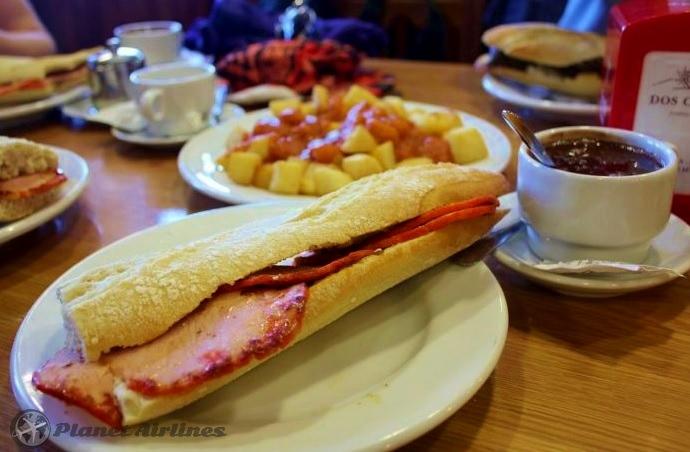
Some authentic dishes in Madrid are Cocido Madrileño, Callos Madrid Style, Patatas Bravas, Albondigas (spanish meatballs) or Churros with Chocolate amongst some of the favourites.
Madrid is also famous for its seafood, despite being inland, the capital has the highest demand for fish, because of the amount of people, tourism and business in the city. You can find fresh fish caught daily served in its restaurants around the city centre. It's also possible to sample all of other National dishes like Paella, Tortilla, Pulpo a la Gallega (Octopus) or Gazpacho. Each region in Spain make every dish slightly differently.
Last but not least, don't forget to try the typical Tapa culture food! Tapas is a traditional way of snacking in Spain. From lunch time to dinner, tapas are always available, as part of a starter or main. Essentially tapas are finger food served always with bread. Having tapas with some beer (Cerveza), sangria (fruity wine) or Tinto de Verano (Fizzy Sangria) at an open terrace in Madrid and watching life pass by as you indulge in this experience of eating and relaxing is a gift in Spain!
Many normal restaurants also can offer terraces to enjoy eating in the open air but you can also find traditional restaurants offering popular shows like Flamenco Dancing or singing at night. (reservation is often necessary especially at weekends).
As for drinks, beer or wine is the excellent combination with spanish meals. Madrid has its own wines, with origin denomination for its authentication, wine, rose or white. It's also popular to have sherry and Brandy for stronger liqueurs. Sangria, is very popular for visitors if you like the sweeter taste, as well as for the Tinto de Verano, which is a fizzy drink with low alcohol. Beers like Cruzcampo or San Miguel are the most sold, as well you can order beer with sprite (clara) or beer with lemon (Clara con limon).
✔️Tip: When asking for a beer, a glass of beer in not used, instead you need to ask for: "caña" if what you want is a draught beer.
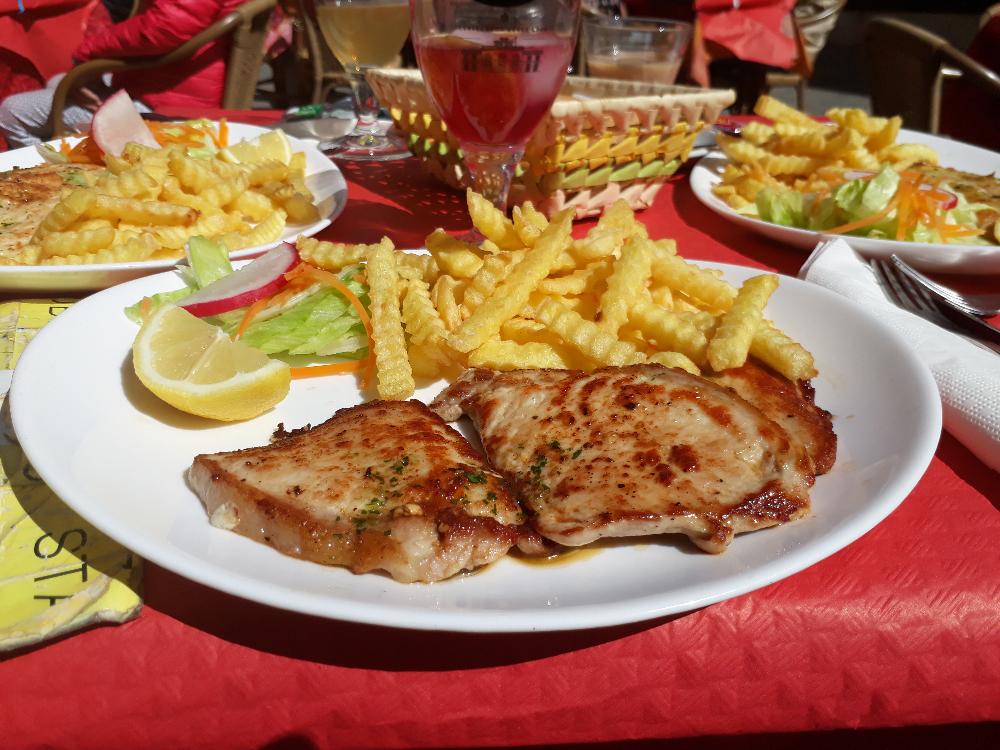

.jpg)
Madrid offers a great cultural scene, renowned galleries and Museums (El Prado, Reina Sofia, Thyssen Museum), beautiful Buildings like Cibeles Palace, Royal Palace, Puerta del Sol, Puerta de Alcala, Almudena Cathedral, Royal Theatre amongst others. There also plenty of parks and open spaces for when the city becomes to crowded and want to escape to the open air, parks like El Retiro, Moncloa or Casa de Campo are only a few stops away by metro and can make you feel relaxed, or even ideal to do sports.
For those interested in football, Madrid hosts one of the most visited stadiums in the world, home to Real Madrid FC, Santiago Bernabeu Stadium. Madrid is a city for all tastes. You can also find a good alternative scene to go out and socialise in the many terraces and public squares around Tribunal area, Alonso Martinez or Chueca (the gay district). Enjoy Madrid to the fullest with culture, history, art, cuisine and leisure, all in one city!
Below you have more information on the highlights of the city and what not to miss during your stay in Madrid:
- Museo del Prado: The Prado Museum is one of the largest collections of Spanish art and paintings in the world! Dating from the 12th century to the early 20th century. A visit to Madrid isn’t complete without a dose of Spanish culture. With over 7,000 paintings at the Museo del Prado, you’ll see some of the best artworks from Spain and across Europe. From Goya to El Greco. Some of the best paintings not to miss are listed below. Accessing the museum can cost around €15, buying online, or queuing for a long time at the entrance to buy on the day. Get there by metro from Banco de España station (line2) and walk 7 minutes.
✔️Tip: The museum is expensive, but if you wait till the last two hours of opening, the museum opens its doors for free to everyone. Make sure you are there early not to queue too long, generally 18h monday to saturday and 17h on sundays.
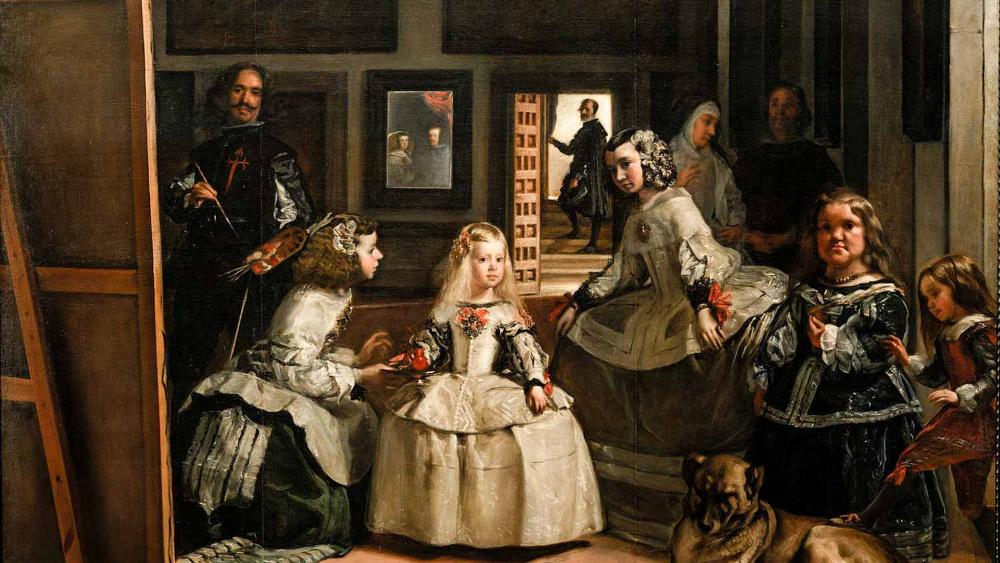
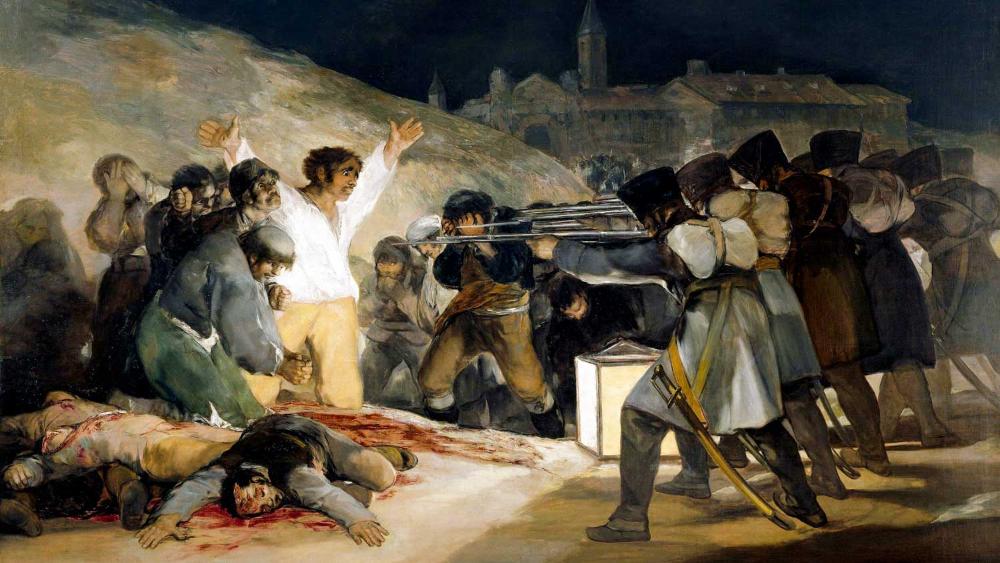
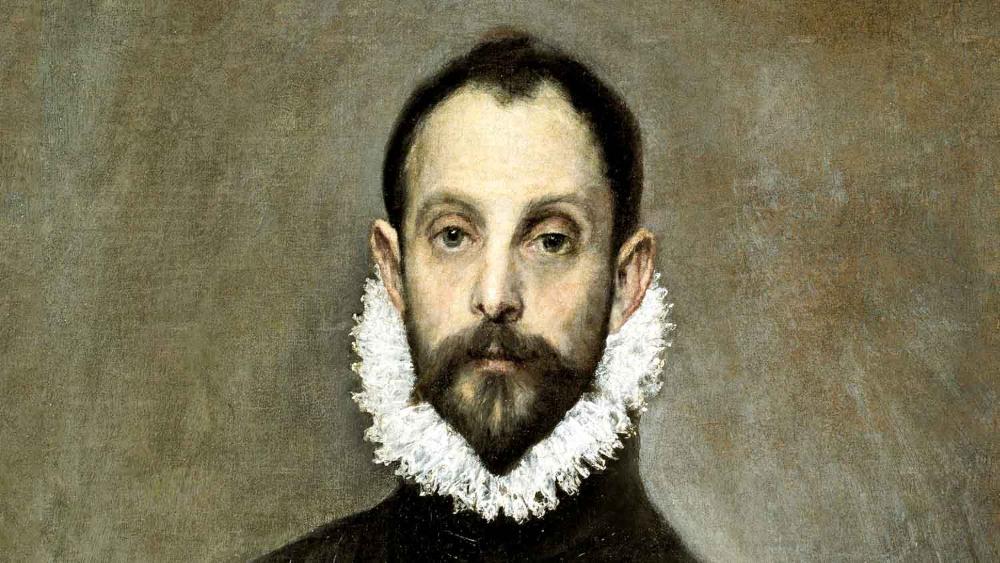
- Puerta del Sol: The Sol Square is the main epicentre of Madrid, and actually of Spain, designated by the "Kilometre 0", a plaque outside the Madrid Government Building building shows this mark. The square has a lot to see, with the main building being that of the main headquarters of the Madrid Government, the formal Royal House of the Post Office. Another main feature to see is the "Oso y el Madroño" a landmark bronze sculpture featuring a bear & a strawberry tree which are representable of Madrid, and how in the past many years ago, there were brown bears in the area. The tree, is a specific tree to madrid. Another thing to watch out is the sign of "Tio Pepe" at the top of one of the buildings which is a brandy and sherry wine drink found in Spain, the advert has become iconic also with the surroundings now.
Sol is the centre also for transportation and social gathering for locals and once a year it hosts the "Uvas de fin de Año", the New year grapes, a traditional custom in Spain to have 12 grapes as the bells sound to mark the New Year. You can find additionally many shops, restaurants, money exchange, tour information and souvenirs in the area. Its easy to get to with Metro lines 1,2 and 3 all stopping here. Also there is suburban trains by "Cercanias" which can reach direct to the outside towns of Aranjuez, Parla, San Sebastian de los Reyes and Alcobendas or with one change at Nuevos Ministerios station, travel to other destinations like the airport, Alcalá de Henares o El Escorial.
❗Attention: Sol is also a target area for pickpocketing and scams to visitors. Always beware of people asking questions to help you and be aware of your belongings!.


- Palacio Real and Almudena Cathedral: The Royal Palace of Madrid is the official residence of the Spanish Royal Family, but it is only used for state ceremonies. The palace has 135,000 square metres of floor space and contains 3,418 rooms, though only 25 rooms are available for the public to view, thus paying around €11/€13 for the entry. The palace is the largest functioning Royal Palace and the largest by floor area in Europe.The actual King Felipe VI and the Royal Family do not reside in this palace, instead they live in the more modest Palace of Zarzuela on the outskirts of Madrid.
The Almudena Cathedral is the seat of the Roman Catholic Archdiocese of Madrid. The cathedral was consecrated by Pope John Paul II in 1993, although its construction did not start till 1879. When the capital of Spain was transferred from Toledo to Madrid in 1561, the seat of the Church in Spain remained in Toledo and the new capital had no cathedral. Plans to build a cathedral in Madrid were discussed as early as the 16th century but the cost of expanding and keeping the Empire came first and the construction of Madrid's cathedral was postponed. Making the cathedral the largest that the world had ever seen was then a priority, all other main Spanish cities had centuries old cathedrals. It is located next to the Palace and is free to enter. (from the side entrance, not the front).
✔️Tip: Accessing the palace is expensive, but if you come two hours before it closes then you can access it FREE of charge every day of the year! Note you need to be a member of the EU to have access to the free entry. Nearest metro station is Opera, line 2,5 and P.Pio-opera line. Also view the palace from the side, accessing via the Sabatini Gardens for free. The views are great and the atmosphere is very relaxing and calm.



- Opera and Plaza Isabel II: The area around the Square of Isabel II is full culture, art and music. You don't need to pay even to admire and listen to many buskers on the street performing renowned parts of the most famous composers. It's also an area of meeting, going for dinner and snacking with many restaurants and bars around the area. Nearby you will find the gardens of Plaza de Oriente, adjacent to the Royal Palace. On the square itself of Isabel II you will see the statue that takes her name, the Royal Theatre (Founded in 1818, and opened in 1850, the Royal Theatre has suffered fires, explosions and flooding, which have left a permanent mark on the way the building looks. The building was last renovated in 1997, and now has over 65,000m2 of floor space, and the capacity for 1,750 people).
To buy tickets and see what's on visit: Royal Theatre.


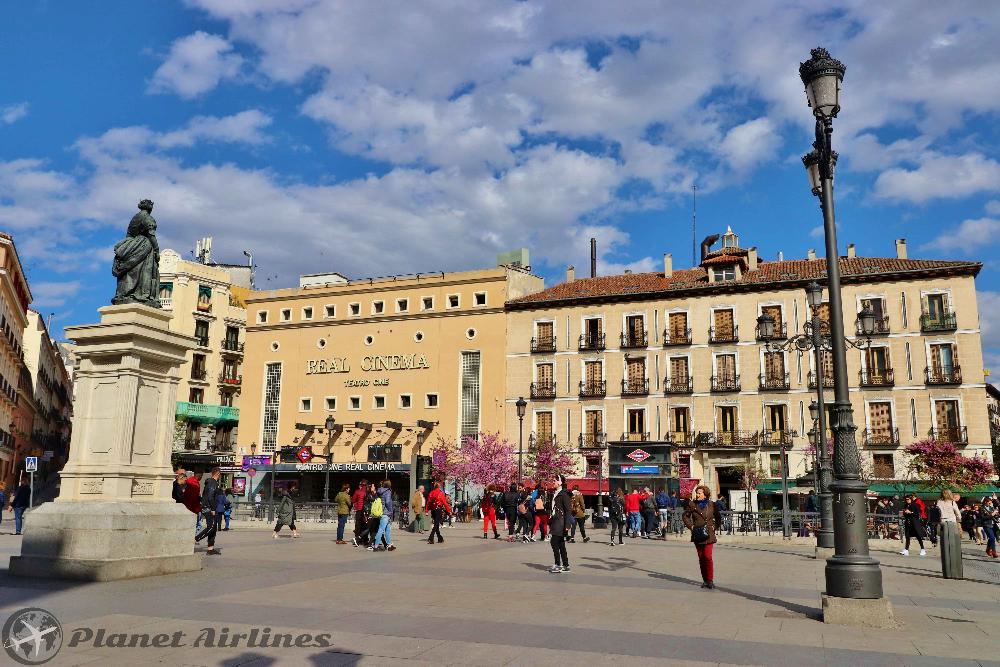
- Plaza Mayor: The major square in Madrid, is also one of the most breathtaking sites in Spain, this plaza has 237 balconies facing the centre of the square where a statue of King Felipe III sits on his horse. Dating back to the 1600s, today the Plaza Mayor is a site of outdoor cafes and restaurants where wandering tourists can relax, enjoy a drink and soak up the atmosphere. Note, that the restaurants here are all very expensive and overcharge. Also the area is typical for pickpockets to target tourists, so ensure your belongings and avoid people asking you questions here. Access the Plaza Mayor by walking from Sol station only for 5 minutes.
✔️Tip: To enjoy Madrid the best option is to walk by foot, everything you need to see is in walking distance and there is always a cafe or bar in which to recharge! In Madrid there are several Free Tour Groups you can join and they explain in Both English/Spanish interesting facts about the city and its history. Check for "Free Walking Tours madrid" online for more info. A walking tour in Madrid can take up to a few hours and depart from either the Plaza Mayor or Plaza Isabel II. Another alternative is to enjoy the city from the comfort of a roof top bus, you can buy tickets for the tour on Madrid City Tour

- Cibeles Palace and Fountain: This is the centre of Madrid when it comes to the arteries of the city, where 3 major neighbours and 4 main avenues coincide. It is delimited by four prominent buildings: the Bank of Spain, the Palacio de Buenavista, the Palace of Linares ("Palacio de Linares"), and the Cybele Palace ("Palacio de Cibeles"). These constructions are located in four different neighbourhoods from three different adjacent districts: Centro, Retiro, and Salamanca. The Plaza de Cibeles fountain is neoclassical art with marble sculptures, that has become an iconic symbol for the city of Madrid. As a curiosity, it's the place where the football team "Real Madrid" come to celebrate their big victories. It represents Cybele, the Greek goddess who is depicted sitting on a lion-drawn carriage. In the beginning, the fountain supplied water to the citizens of Madrid back in the 1800's. Plaza de Cibeles was originally named Plaza de Madrid, but in 1900, the City Council named it Plaza de Castelar, which was eventually replaced by its current name.
The most notorious building you will notice here, is the Palacio de Cibeles (Cybele Palace): This striking building is one of Madrid’s most emblematic palaces. It was formerly called the Palace of Communication. Completed in 1919, the Palacio de Comunicaciones was used as headquarters of the Spanish postal service, however, since 2007, it has been the seat of the Madrid City Council. The Palace has a rooftop terrace with a bar and restaurant. It has stunning views of Madrid for a fee of €3 per person. It is also an exhibition place and a social gathering point for artists and people to work on their laptops thanks to the free Wifi. Access to the building is free of charge, except from the viewing platform. Closest Metro Station is Banco de España, Line 2.

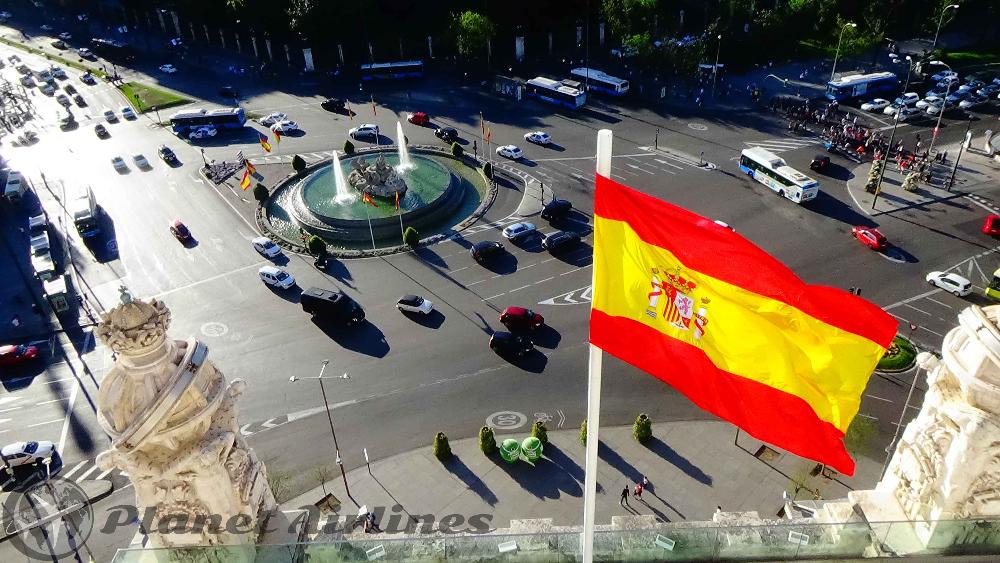
Retiro Park: This is Madrid's biggest park, located east of the city, you can reach the park within a 20 minute walk from the city or taking the Metro direct to the park. There’s green, grassy areas for a picnic, plenty of trees and flowers, a rose garden, and even a lake with ducks and trouts! At the lake you can rent your own boat for 45 minutes for €6. It’s also home to the famous Palacio de Cristal, a building made almost entirely of glass and where they host interesting artistic works, usually free to enter. To access the park take Metro line 2 to Retiro station.
Also next to the main entrance to Retiro Park is One of the five doors that were once used to enter the walled city of Madrid, the Puerta de Alcalá is still admired today, although the walls have long since disappeared. It was inaugurated in 1778.


- Templo de Debod: Although this original Egyptian temple dates back to the 2nd century BC, it was given to Spain as a gift and moved to its current location in Madrid in 1968. Madrid helped Egypt when the Nilo river flooded and saved many villages by getting washed away. While it may a little misplaced at the beginning to see the Egyptian Temple in the middle of an European city, the Templo de Debod is one of Madrid’s most beloved attractions and makes for some excellent photo opportunities. Also in the area you can see magnificent views of the Casa de Campo, the Almudena Cathedral and the south part of Madrid.
✔️Tip: TIf you walk down behind the Temple, you can reach also the "Teleferico of Madrid", cables car which take you on a trip over Casa de Campo. Built in 1969, Madrid’s cable car, has 80 cabins and runs for almost 2.5 kilometers with a max height of 40 meters. Starting point is from Pintor Rosales closer to the city centre. You can stay to walk in the biggest park of Madrid, do exercise or have a coffee on the other side of the cable car. Prices are around €6.50 return by the Cable car.


- Gran Via: Known for its bright lights and shopping, Calle Gran Vía is one of Madrid’s most famous streets. You’ll be able to find anything you need here, restaurants, commercial and retail shops, many of the city’s renowned theatres, cinema's and many hotels and shopping centres like "El Corte Ingles" or "Fnac" located next to Callao metro station. Gran via is a long street from Plaza España to Cibeles, you can get of at Gran Via (Line 1,5), Callao (Line 3,5) or Plaza de España (Line 3,10) Metro stations to walk along the wide street.
.jpg)


- Reina Sofia modern art Museum: The museum was made for modern art lovers. With an impressive collection of Salvador Dali’s work as well as one of Picasso’s most famous paintings,La Guernica. The museum costs normally €10, but is free if you go two hours before it closes on Monday and Wednesday to Sunday. Get to the museum by Metro at Estacion del Arte, line 1.
There are several destinations not far from Madrid which can make a perfect half day trip. The following places can be reached within one hour from Madrid by public transport:
- Escorial Monastery, a beautiful construction from the Renaissance era located north-west from Madrid, surrounded by breathtaking scenery views. To get there take bus 661 / 664 from Moncloa Metro Station (line 3 and 6).Bus duration,1 hour approx.
- Alcala de Henares is recommended for being the birthplace of famous author Miguel de Cervantes. The town is listed in the Unesco World Heritage for its rich history and archaeology. To get there take bus 223 from Av.America metro station. (line 4, 6 ,7 and 9). Bus duration,35 min approx. Alternatively you can take the train,from Atocha Renfe Station (cercanias trains), which depart every 10 minutes and also take 35 min.
- Aranjuez, a town on the edge of Madrid State, where the Royal Family have a Palace and where you will find beautiful gardens and parks. It's listed as well on the Unesco World Heritage site for it's cultural buildings.Take the local train (Cercanias) from Sol Station.(by metro get first to Sol Stop line 1,2 and 3) or Atocha Station (Metro line 1).Train duration,1 hour approx.
The nightlife in Madrid is varied and exciting with many bars, tascas (cheap bars), theatres, movie houses and nightclubs to keep visitors entertained. El terraceo (terrace-hopping) is a way of life in Madrid. Most people only start partying at around 11pm and few locals enter a nightclub before 1am. Many places stay open past dawn. Plaza Mayor, Puerta del Sol, Gran Vía and Chueca are some of the trendiest nightlife areas.
Plaza Santa Ana and the surrounding streets have a few good spots and the seven-floor Kapital has a great rooftop bar. For clubbing, the Room is fantastic but only open Fridays, Joy Eslava Disco comes highly recommended, and Lavapiés is popular with the bohemian crowd. There are wonderful flamenco performances at Casa Patas, and the Lope de Vega theatre has excellent shows. Tapas and coffee bars are also very popular in Madrid.
There are various Madrid nightlife coach tours offered, a good way to avoid queues and entrance fees at certain venues.
A lot of the late night bars and clubs offer incentive flyers for people entering before a certain time to get a free drink. Otherwise drinks can cost from €10 and up. So it's popular to hang out on the streets near the clubs, looking out for the flyer-boy/girl. It's also popular for places to offer "chupitos" they are shots, but often they are given after you buy the first drink. Be careful of tricks and people asking for cash payments before you enter the club and fake flyers for cash (offering free drinks).
🌈The gay village of Madrid is situated around the metro station of Chueca (line 5), and expands much of the city centre, from the streets of Hortaleza and Fuencarral. Madrid is a very LGBT friendly city, and its possible to find many other venues out of the centre. Also its free to walk around expressing signs of affection in the city and many couples elect to live in Madrid, because of its tolerance.
Madrid offers some of the best shopping, not only Spain but also Europe they say, and with so many shopping districts, visitors can find just about anything and everything! With small, specialised stores, boutiques and antique shops as well as the slightly bigger department stores and bustling food markets, Madrid is a shopper's paradise.
The city's best known area for high-end shopping, is the area of Salamanca, one of Madrid's most glamorous places to indulge yourself and stretch your credit card's legs.
Chueca and Fuencarral, on the other hand, are filled with trendy fashion stores and alternative fashion. El Corte Inglés at Sol and Callao, is by far the most convenient place for shopaholics to get their fix, selling all kinds of goods from high fashion to regional foods like Chorizo (spicy sausage) and Turron (a kind of nougat). One of the most popular markets is El Rastro, attracting Madrileños and tourists alike. It has become famous for its antique stalls, second hand goods, jewellery and unreliable electrical goods and is held every Sunday from morning until mid-afternoon.
❗Attention: Most smaller shops close from 14:00 to 17:00 and Saturday afternoons, for the siesta brake. Note that in July and August a lot of small shops close completely as there is not much activity due to the high temperatures.
Madrid is an affordable city for every pocket. You can find wide range of prices to suit all pockets from 5* Star Hotels to more economical hostels and private accomodation. In Madrid you will find also accommodation called "Hostal", they feature Hotel style rooms but without extras, generally smaller rooms and they are run by local owners other than big businesses. Prices can be range around €25 per person in a Hostal. You can find these "Hostals" on booking.com or airbnb as private rooms or you can also ask in person when you arrive to the city.
Madrid is a very popular city to stay, and specially city centre around Sol, Plaza Isabel II, Retiro and Atocha are really busy and the demand is high. It's recommended that you book in advance and locate a place near to the metro or bus lines for ease of transportation out of the city. If staying in Hotels in the city centre, you are looking at around €60-70 per night. Also consider staying in the south or east of Madrid where it is cheaper and has plenty of transport links.
Visiting Madrid city centre can take only a few hours as everything you need to see is close by foot. However to relax, enjoy all the city has to offer, visiting museums and attractions, then we suggest to stay in Madrid 3 to 5 nights. Also its a good idea to take advantage of the close distance of other cities like Segovia and Toledo to Madrid to maximise your trip.
Madrid Photo Slide 📷


















.png)